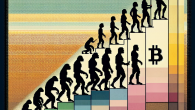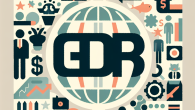
Is the SDR Still Relevant or Merely a Statistical Curiosity?
The Global Economy in 2024: Where Are We Headed?
Ah, the global economy—the endlessly spinning roulette wheel of fortune, anxiety, and opportunity. As we power through 2024, one must ponder, what grand surprises lie ahead? Will inflation finally sit down and take a breath? Will central banks ease their seemingly relentless grip? And will investors everywhere finally get some well-deserved respite?
Pour yourself a cup of fine Darjeeling, dear reader. We’re going to take a sharply critical, delightfully insightful, and ever-so-slightly sardonic look at the global economic landscape. Because in the world of finance, one must always keep a sense of humor—preferably dry, like a crisp Riesling from the Rhine.
A Look Back to Leap Forward
Before we can grasp what’s ahead, it’s crucial to understand what brought us here. The post-pandemic economy has resembled more of a Jackson Pollock painting than a well-structured macroeconomic model. But allow me to draw some lines between the splatter.
- 2020-2022: COVID-19 triggered historic fiscal stimulus, roaring inflation, and rampant supply chain disruptions. Central banks loosened monetary policy like it was going out of fashion.
- 2023: Central banks hit the brakes with aggressive interest rate hikes. Inflation began to cool, but the hangover of tight monetary policy was just beginning to manifest.
And now, 2024 offers a tentative glimmer of stability—if only the global economy would stop fidgeting long enough to embrace it.
The Inflation Dilemma: A Soft Landing or Just a Pause?
The big buzz in macroeconomic circles today—for economists, traders, and your overly enthusiastic friend from grad school—is whether we’re witnessing a soft landing or just teetering on the edge of a delayed recession.
United States: Cautious Optimism
The Federal Reserve, with its perennial balancing act worthy of Cirque du Soleil, has managed to slow inflation to more manageable levels. Core CPI is hovering around 3.2% as of Q1 2024, down from the hair-raising 8% highs of yesteryear. Unemployment stands at a healthy 4.1%. Not great, but certainly nothing to start panicking over unless you’re prone to anxiety about decimal points.
What’s driving this moderation? A triumvirate of factors:
- Stabilizing energy and food prices
- Loosening supply chain constraints
- Tighter monetary policy beginning to show its delayed effects
All signs point toward the fabled “soft landing.” But as any pilot or economist will tell you, landings are never soft if the instruments fail—or if the passengers panic.
Europe: Still Feeling the Chill
The European Central Bank (ECB), always a bit more conservative than its transatlantic cousin, has been slower to adjust. Inflation across the eurozone is more persistent, thanks in part to lingering energy insecurity, particularly in Germany and Italy. The ECB benchmark rate remains at 4.5%, with a potential cut not expected until late 2024.
Germany, the region’s economic locomotive, is flirting with stagnation. Industrial output is down 1.7% year-over-year. Meanwhile, France is doing a fine impression of a mid-2000s romantic film: brooding, underperforming, and somehow still charming.
China: Transition or Trouble?
China remains a wildcard that’s lost some of its predictability. The world’s second-largest economy is undergoing a structural transformation: moving from export-led growth to domestic consumption. But it’s not all peach blossoms and prosperity.
Foreign direct investment has declined, youth unemployment has surged (above 14%), and the property sector—once a crown jewel—is looking more like a crown of thorns. Yet, Beijing remains confident it can achieve 5% GDP growth this year. Confidence is commendable; reality may prove less accommodating.
Key Trends to Watch in 2024
So, where is this grand machinery of money and markets headed in 2024? Let’s examine the compass points guiding us forward.
1. Central Bank Policy Shifts
Brace yourself for the great pivot. Most central banks in developed economies are expected to gradually ease monetary policy toward the latter half of the year. The Federal Reserve might lead the charge with a modest rate cut in Q3 of 25 basis points—unless, of course, inflation rears its ugly little head again.
2. The Oil Market Wildcard
Geopolitical tensions simmering in the Middle East and Eastern Europe continue to make oil markets as stable as a seesaw in a hurricane. Brent could swing between $70 to $95 a barrel in 2024, with implications ranging from consumer gas prices to global food production.
3. Global Trade Realignment
We’ve entered the age of “friend-shoring”—a less catchy, more politically correct cousin of protectionism. Nations are seeking to build trade resilience by reducing dependency on geopolitical rivals. Expect more regional trade blocs, especially in ASEAN and Latin America, and less reliance on singular partners such as China.
4. AI and Automation Acceleration
Artificial Intelligence, contrary to conspiracy theorists, is not here to steal your job and your dog—at least not yet. What it is doing is accelerating productivity gains worldwide, particularly in sectors like logistics, manufacturing, and software. For macroeconomists, this raises questions about workforce displacement, wage stagnation, and long-term growth potential. For now, the robo-apocalypse is postponed.
Risks on the Radar
No economic outlook is complete without turning our gaze toward the storm clouds. Here are the key risks that could derail 2024’s cautious optimism:
- Geopolitical Shock: Ukraine, Taiwan, and the Middle East remain potential hotspots for disruptions.
- Fiscal Recklessness: Sovereign debt levels are climbing. The U.S., for instance, is flirting with 120% debt-to-GDP. Some say it’s sustainable. Others say “don’t lend them your wallet.”
- Stagflation Specter: If inflation persists while growth slows, we risk an unwelcome visit from the ghost of the 1970s.
So… Where Are We Headed?
In the long arc of economic history, 2024 may well be remembered as a transition year. A year when the worst fears of inflation gave way to tempered optimism, when central banks began their slow retreat, and when the global economy sought to redefine its place in a more fragmented world.
But as with all predictions, one must treat them less like commandments and more like weather forecasts—useful, directional, and occasionally wrong by just enough to ruin your picnic.
So, where are we headed? Judging by the current signs: cautiously forward, occasionally sideways, and always one miscalculation away from a fascinating headline.
For more insights offered with wit and hard-won wisdom, visit our About Us page or reach out via our Contact Page. The global economy waits for no one, but we can certainly help you keep up.









Leave a Reply